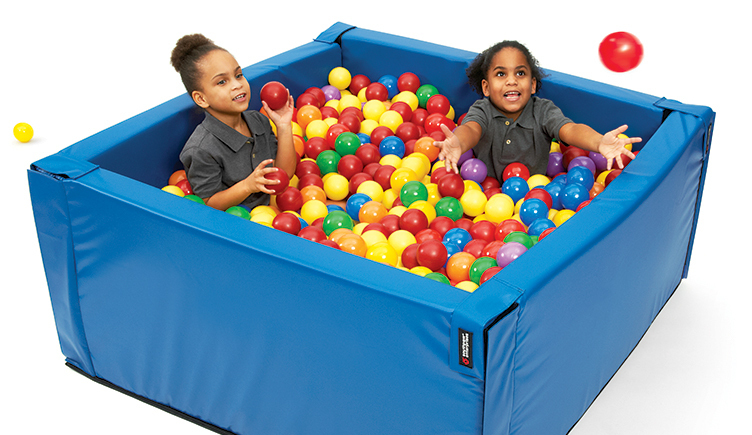Occupational therapists play an important role in the preschool environment to help preschoolers develop foundational motor skills required for the rest of their educational journeys. Preschool OTs work with preschoolers on developing motor skills such as a tripod pencil grip and scissor skills; sensory skills such as tolerating messy play and playing appropriately on the playground; and adaptive living skills such as handwashing and using eating utensils. School-based occupational therapists who work in preschools often face unique challenges, including time constraints to conduct direct therapy sessions due to a short school day (students attend preschool anywhere from 2-4 hours), the sheer volume of initial assessments that need to be conducted, and the necessity to closely collaborate with the rest of the preschool team.
As a result, therapists must often adopt creative solutions to ensure they are providing services to the student while supporting the school staff and parents to carry over OT strategies to the child’s daily life. One such method I used during my practice as a preschool therapist was conducting whole-class sensory-motor groups in special-day preschool classrooms.
Group Structure
The sensory-motor groups used a “push-in” model, with the therapist going into the classroom rather than pulling children out of the classroom for services. The groups were conducted in the classroom (or occasionally in the play yard) and involved participation of all students in the class whether or not they received OT services. The weekly group was a part of the students’ schedule, and the teacher and paraprofessionals supported the therapist in running the group. A visual schedule was used to front-load the students about the activities that would be done during the group. The group activities included one gross-motor, one fine-motor and/or one sensory-based activity. In addition, the group also provided opportunities to work on “learning to learn” skills like turn taking, sharing materials, following group instructions, and attending to the task.
The group provided ample avenues for positive peer modeling since it comprised of a mix of students with motor challenges as well as students, who despite other disabilities, had good motor skills. The group also provided opportunities to incorporate social language; for example, asking students to tell the next person “it is your turn” or cheering on their friends while they completed their obstacle courses. The push-in model also provides numerous collaboration opportunities for the therapist and the classroom staff. The therapist learns about the classroom culture, teacher preferences and curriculum expectations, while the classroom staff learns therapy strategies that can be carried over in their classroom. 1
Group Planning
Strategic planning and developing positive relationships with the classroom staff are important for running successful groups. Close coordination with the teacher is essential to ensure that planned activities fit within the classroom culture and that, as the therapist, you are maximizing the potential of each child to benefit from the group. The OT should keep in mind the student-to-staff ratio in the classroom while planning for the groups. If the student student-to-staff ratio is large, the group structure might need some tweaking, like splitting the students into two smaller groups or setting up fine-motor and gross-motor stations with students rotating between each station. It is also important to collaborate with paraprofessionals to help them understand how they can contribute to smoothly running the group.
Conducting groups might require a fair amount of prep work in terms of activity planning and creating activity samples. Here are some tips I have found useful while planning for the groups:
- Having monthly themes and basing all gross- and fine-motor activities around that theme. For example, if the theme for the month is “Halloween,” you might plan a gross-motor activity such as a ring toss on a witch’s hat and a fine-motor activity of sorting bugs with tongs.
- It is possible to individualize services within a group session by grading activities for students with differing levels of abilities. For example, you might need to pre-cut materials for students who might still be learning snipping. You might also need to have some adaptive equipment on hand, such as adaptive scissors, adapted glue sticks, weighted markers, etc., depending on the needs of the student.
- If you ask, administrators might be willing to provide you with some manpower support, such as paying a classroom aide for a couple of extra hours to help with some of the group prep work.
- To help parents carry over strategies worked on in the group, therapists can create a newsletter describing the skills covered and ways parents can work on those skills at home.
Sensory-motor groups are an effective and fun way to help preschoolers build their foundational motor skills. They provide avenues for peer modeling and learning appropriate social behaviors. The preschool team in most school districts is a very close-knit team requiring intense collaboration between team members. With an itinerant schedule, OTs sometimes have difficulty connecting with the rest of the team. Push-in groups in the class provide therapists with a great opportunity to gain some face time with teachers and build relationships with the preschool staff. Therapists can also use the principles and tips mentioned in this article to run other groups in a preschool, like a social skills group or a lunch bunch group!
1Bazyk, S. & Cahill, S. (2015). In Case-Smith and O’Brien (Ed.), Occupational therapy for children and adolescents (7th ed., pp. 664–703). St. Louis, MO: Elsevier/ Mosby.



